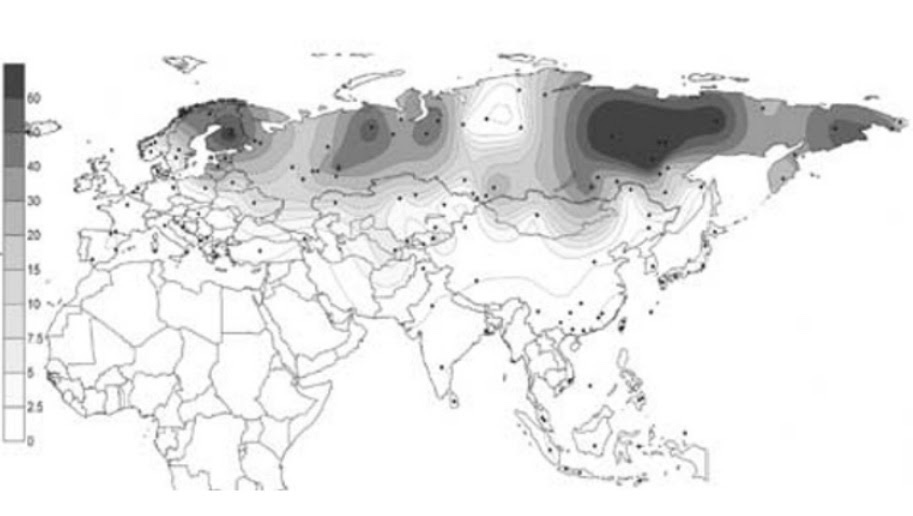Go west, young Siberian
A history of Finnish genes and culture: part 3 of 6
A 1999 paper in Nature identified a mutation on the human Y chromosome with a geographic distribution that, depending on where you stood, was either peculiar or deeply validating. The mutation was later found to be part of the N1c lineage. An indelible tracer of direct paternal lineage, this haplogroup marker means that all men who carry the variant N1c share a common ancestor in the recent past (and by recent on a genetic scale, we mean in the last dozen thousand years, or since the last major Pleistocene ice age).
This haplogroup appears in samples distributed from Finland eastward deep into Siberia. Outside the Baltic region, the mutation approaches non-existent levels in the rest of Europe. While we know 61% of Finns carry it (and up to 70%, depending on the study), the next highest frequency is found among Yakuts, the northeasternmost Turkic population in the world, some 9000km away across the vastness of Russia. Other populations with proportions of this variant greater than 50% are predictably Estonians, Latvians and Lithuanians, as well as assorted obscure Uralic-speaking ethnicities with populations in the thousands or even hundreds, strewn across Central Eurasia.


